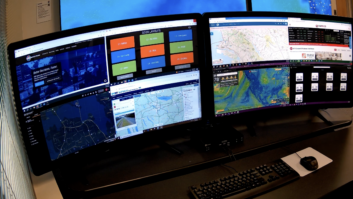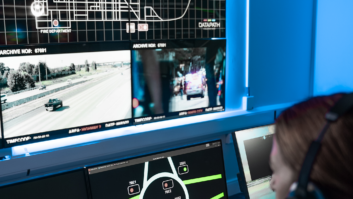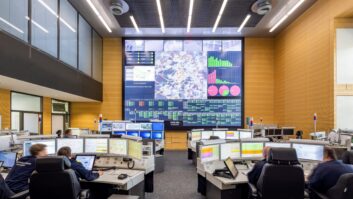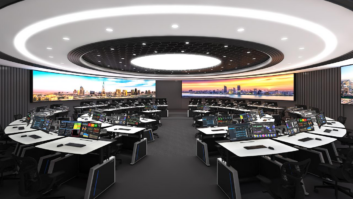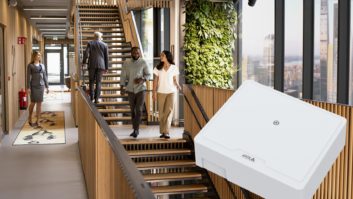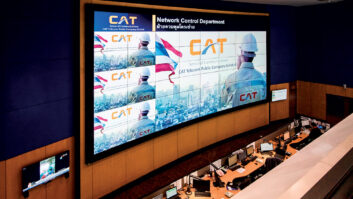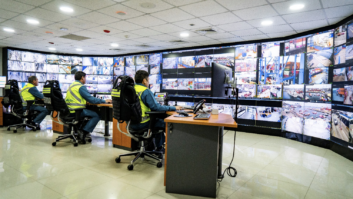The ISE Control Rooms Summit, which took place during ISE 2022 in Barcelona, depicted an exciting market in the midst of an important transition. By its very nature – and the often ‘mission-critical’ applications that it serves – control rooms has always been situated towards the cutting edge of pro-AV. But with an increased need for flexibility and a myriad of cyber threats to hold at bay, it’s apparent that the expectations of innovation are now higher than ever.
Our report from the summit (see June issue) alluded to many of the key trends affecting control rooms at present, including: a heightened focus on security, involving the separation of core systems to minimise risk; more extensive use of IP; the implementation of cloud-based platforms for more flexibility and data-driven insight; and the use of AI to automate more repetitive tasks and support decision-making.
Three of these trends – cloud, AI and cyber security – will be explored in particular depth in this article. But to begin, a brief overview of how the control rooms market has been performing and evolving over the past few years.

Not unlike some other pro-AV mainstays, control rooms has been subject to a variable level of investment through what we will inevitably come to regard as ‘the pandemic years’. Several commentators observe that, in any case, control rooms tends to have a longer buying cycle than some other markets, which makes sense given the scale and complexity of many installations. Nonetheless, there has been an enhanced opportunity to look at existing sites and determine if upgrades are required.
Piet Vanhuyse, segment marketing director of large video wall experience at Barco, comments: “It does depend on the end-markets [to a certain degree]. You see some making less of an investment, and others taking the opportunity to revisit their current installations.” Nonetheless, he reports continuing strong business in applications ranging from hospitals to transportation facilities and other environments where “process control […] is becoming more critical”.
Crestron’s director of technology, Stijn Ooms, also evokes a market that has remained strong for the company. “We have seen a big growth in control rooms’ use of Crestron gear over the last few years, [in particular] because of AV over IP.” Control rooms has been a concern of the Crestron business since 1999, but there has been a notable uplift since the introduction of the AV over IP solutions range, DM NVX.
Whilst it is not a key focus of this overview, it is important to mention that the shift towards IP-based infrastructures has been as pronounced in control rooms as many other pro AV markets. The flexibility this has brought to many projects is neatly summarised by Jon Litt, director government solutions (US) at Christie, who explores the trend through the prism of the company’s own emphasis on display solutions.
“Control room displays have become larger, brighter and more seamless, and control room processors have become more distributed and based on AV over IP technology rather than monolithic AV technology, and therefore also have more stringent security requirements,” he says. “And with the advancement of IP technology into control room processing, the control room operator has access to more data-points which can be used to increase the effectiveness of the control room operations.”
Jacob Zuo, CEO of IP video encoder, decoder and NDI converter specialist KILOVIEW, confirms that its “roadmap is now based on working with video and audio and seeing how everything can be brought together on an IP foundation, using NDI [the IP transportation technology].” Demand for this approach is “growing all the time across control room applications,” he adds.
But in an observation that would likely be echoed by many others, Ooms indicates that this combination of developments is bringing us to a decisive point. More collaboration than ever “is now required of an organisation’s enterprise information technology teams to ensure a successful control room system implementation”.
PRIORITISE SECURITY
Above all, there is an awareness that system configuration in the age of IP must prioritise security whether processes are primarily based around the control room environment, or if they also encompass other locations, remote data points, and so on. Again, Litt encapsulates the main threads of what can potentially be a complex network architecture.
“The requirement of the modern control room application is the ability to ‘access and interact’ with essential data points regardless of whether the source of the data is local or remote with increased ‘security’,” he says. “Data points could be residing within an AV rack, in a data centre, an operator’s computer workstation, a mobile device, or somewhere outside the control room, including the cloud. Then there is the requirement to effectively interact with and control the data source just as if the application was running on a local computer in front of the control room operator.”
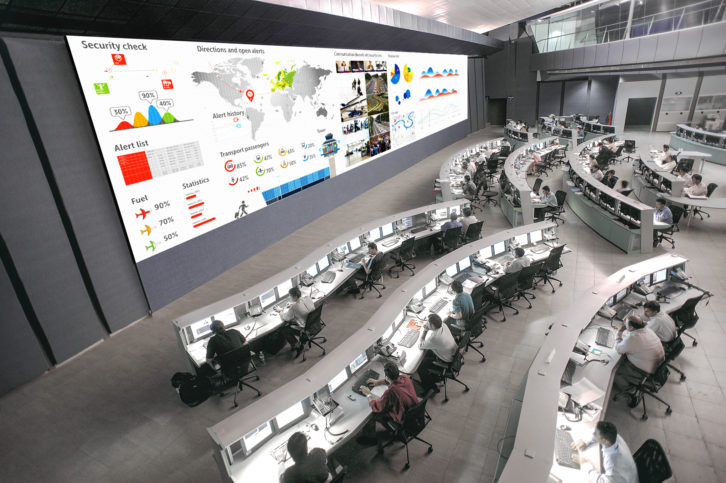
Robust security protocols must protect both the control room and enterprise network, while also giving operators the accessibility they need. “This requires effective network architecture and management in addition to the design and specification of the AV systems within the control room,” says Litt, adding: “AV in a control room is no longer a siloed system.”
On an individual system provider level, the approach to security tends to be multi-faceted. For example, Ooms points to Crestron’s widespread use of methods including 8021.X encryption – an IEEE network standard that provides an authentication mechanism for devices wishing to connect to the network – and AES-128, which employs a 128-bit key length to encrypt and decrypt a block of messages.
George Ragias, solutions architect at global provider of AV collaboration services & support company Kinly, underlines the importance of encryption across control room applications. “With the arrival of AV over IP and the network, end-to-end encryption is important,” he confirms.”We’ve seen that it in a range of AV over IP projects. It could be a control room, or it could be a training facility. In some projects, we don’t have control over the network, and we are not allowed to put anything on the network because of the cyber threat. So, encryption is vital.”
Not surprisingly, certain sectors – not least military and defence – can often have highly specific security stipulations. But the impression from talking to a broad cross-section of manufacturers is that they are able to both satisfy existing needs and help clients stay one step ahead of emerging threats.
To this end, Barco is not alone in having published security-themed white papers dedicated to the control rooms market. In the recent ‘Keeping Your Barco Control Room Secure’ document, it outlines a ‘three-pillar’ security strategy: ‘1. Secure design and development: secure technology from the get-go. 2. Updates and patches: be secure and stay secure. 3. Incident response: detect fast, solve faster.’
This kind of ‘constant vigilance’ ethos will surely become even more important to control room security as the number and range of cyber threats continues to expand at a frankly troubling rate.
CLOUDY DAYS
Installation has also obtained some insights into other technologies and their impact on control room environments. The role of the cloud is particularly interesting and likely to even be more dependent on individual customer requirements than in other markets. But where it can be deployed, it may be playing an ever-greater role in facilitating more versatile control and processing.
“As for the cloud, there are two types of control rooms,” says Ragias. “There are highly secure control rooms where we’re not even allowed to use Internet. [For example] there was a project where we specified the IT was all over AV over IP and audio over IP [using Audinate’s] Dante. I specified the manager, but we were not allowed to use it because the only way that you could take the license and download it to the server was via Internet.”
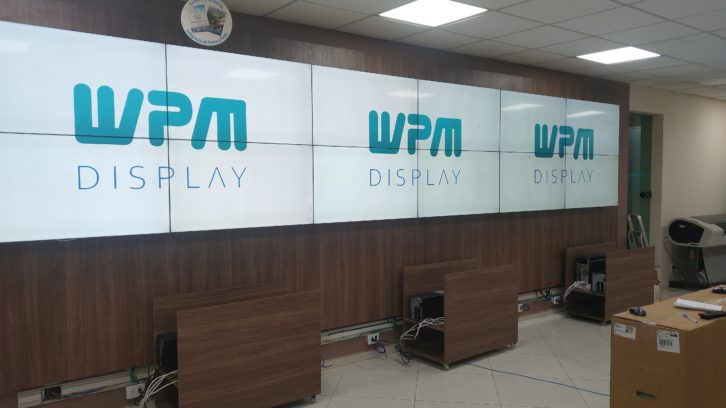 Then there are projects where security and end-to-end encryption are vital, but, he says, “some people still want a cloud-based monitoring solution as they can see it’s a huge help for managing equipment, updating firmware and troubleshooting remotely”. For most projects, however, Internet is not permitted because of the sensitivity of the content being distributed within the premises.
Then there are projects where security and end-to-end encryption are vital, but, he says, “some people still want a cloud-based monitoring solution as they can see it’s a huge help for managing equipment, updating firmware and troubleshooting remotely”. For most projects, however, Internet is not permitted because of the sensitivity of the content being distributed within the premises.
For Crestron, Ooms says that to a large extent “the fear of the cloud is gone” and customers are aware of the flexibility provided by cloud-based access. He cites a recent project involving an unnamed police force where a cloud solution facilitates access to hundreds of cameras around the city – both for personnel in the control room and on the move. There is also the opportunity for technical managers to “go to the cloud and have access to different devices, do firmware updates, etc.”
There was also discussion of AI’s emerging potential in this market at the ISE Control Rooms Summit. Mehmet Kaya, VP sales EMEA at Barco, highlighted its scope for development in aspects of “workflow automation” and “decision-making support” for operators confronted with more autonomous sub-systems in intelligent control deployments.
Expanding on these observations, his Barco colleague Vanhuyse underlines AI’s ability “to help the decision-making process and monitoring for operators” where their role moves towards supervising autonomous systems. He adds that there are some aspects “such as camera systems that already have AI applied” and implies that its deployment will be determined in part by control room operators “looking at control and what they need to do… and the fact that [many are] going to be dealing with a bigger number of sources coming in, and a growing amount of data. The inputs are more complex and the outputs are expected to be better because of the complexity of the inputs.”
In short, when it comes to AI – watch this space.
ENHANCED PERFORMANCE
Meanwhile, the emphasis on improving visual performance of display wall technologies – always a driving force in the control rooms market – continues unabated. Showcased at ISE 2022, Barco’s latest launch is TruePix, an LED video wall platform that was “designed completely from the ground up” to suit a wide variety of enterprise applications including control rooms as well as TV studios and auditoriums. Available as 16:9 tiles with pixel pitches ranging from 0.9 to 1.9mm, TruePix is the first product to incorporate Barco’s new Infinipix Gen2 image processing system, whose hallmarks are said to include “no visual distortions, low latency, perfect sync and no tearing”.
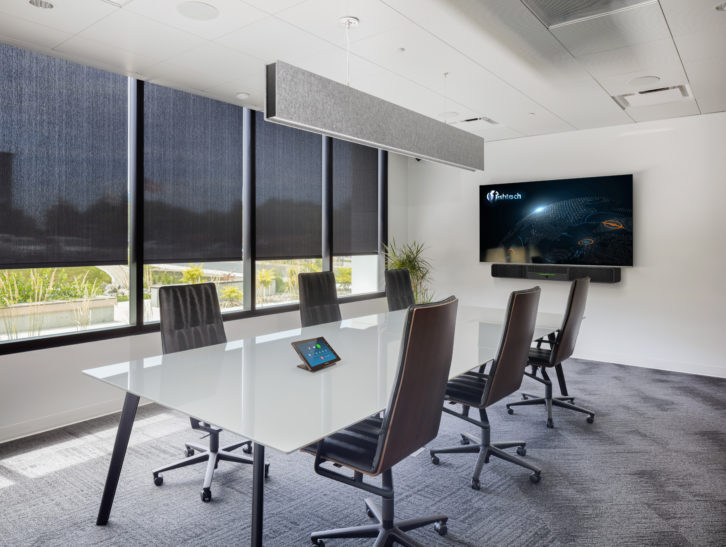 TruePix also includes SteadyView, which is designed to improve viewer ergonomics and reduce eye fatigue – a feature that Vanhuyse notes is “especially important in control room environments, where staff may intensely use the wall for multiple hours on end”.
TruePix also includes SteadyView, which is designed to improve viewer ergonomics and reduce eye fatigue – a feature that Vanhuyse notes is “especially important in control room environments, where staff may intensely use the wall for multiple hours on end”.
For Christie, Litt says that the company’s plans going forward include “displays with continued improvement of visual performance, more options in pixel pitches, improved power efficiency, and improved production yields while reducing overall cost.” For instance, in video wall systems, Christie is providing both LCD and direct view LED solutions, and continues to conduct research on how to deliver highly effective, performance-based video wall products to market. “With LCD tech, we are providing secure tiled LCD options with now even more efficient remote power solutions,” says Litt. “In direct view LED, we are investing a great deal in highly efficient production capabilities which provide us lower pixel pitches, improved production yields, improved energy efficiency and lower costs to our customers.”
Finally, for a hint of what the future might bring, Installation turned to Rob Moodey, EMEA business development manager at Matrox Video. As he points out, “the DNA for most of Matrox’s products comes from a control room environment of some sort”. Moreover, the company has a “unique viewpoint” in that its products are typically used in both video-wall controllers and individual operator workstations, with the connection between the two elements often involving Matrix too.
Outlining a typical scenario, Moodey says: “Starting at the operator desk we find multiple screens – traditionally quad Full HD, now often multiple 4K panels. Those are usually energised by a KVM system that manages the distance between the operator and their computers (located in a machine room down the corridor), without introducing latency or image degradation. Those computers will typically have ‘wall friendly’ graphics systems.”
EMERGING ENGAGEMENT
Well-known in recent times for its KVM over IP products, Matrox is engaged with the emerging IPMX (Internet Protocol Media Experience) open standards and specifications for AV over IP. Moodey believes that IPMX and the protocols it supports “provides an excellent vehicle” for further enhancement of AV/IP, wall control and KVM products, “and the first signs are already there for those who have been watching Matrox announcements”.
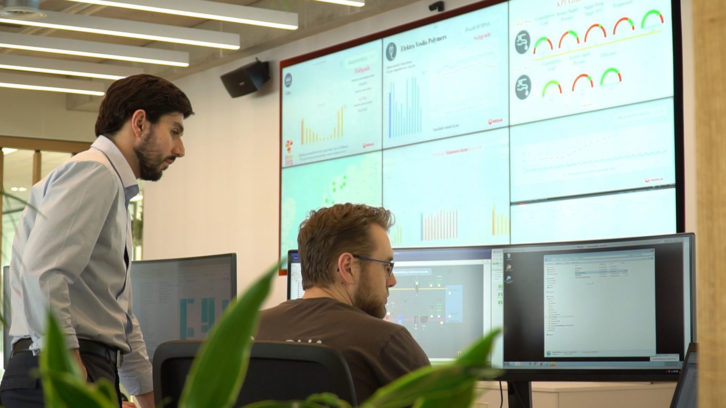 But he also points to more general developments in control room environments. “National control rooms are nothing new,” he says, “but aggregating more and more information from increasingly diverse sources is becoming the norm.” Combining multiple control rooms is also likely to become of a trend following the example set by the air traffic control sector, where there has been a trend towards aggregating the smaller airports into a larger control room. “It is a short step to thinking about other control room scenarios where roles are ‘distributed’ to alternate, rather than central, control rooms,” adds Moodey.
But he also points to more general developments in control room environments. “National control rooms are nothing new,” he says, “but aggregating more and more information from increasingly diverse sources is becoming the norm.” Combining multiple control rooms is also likely to become of a trend following the example set by the air traffic control sector, where there has been a trend towards aggregating the smaller airports into a larger control room. “It is a short step to thinking about other control room scenarios where roles are ‘distributed’ to alternate, rather than central, control rooms,” adds Moodey.
Citing a recent refinery project, he says that the last couple of years have also “stimulated opportunities for reconsidering how to do things without actually being there”. Indeed, expanding this outwards, it seems eminently probable that all kinds of configurations envisaged during the Covid era will come to fruition in the next few years. With multiple new and emerging technologies contributing to a sector where business has remained buoyant despite the numerous recent challenges, it seems there is every reason to keep a close eye on this highly dynamic and inventive market.
